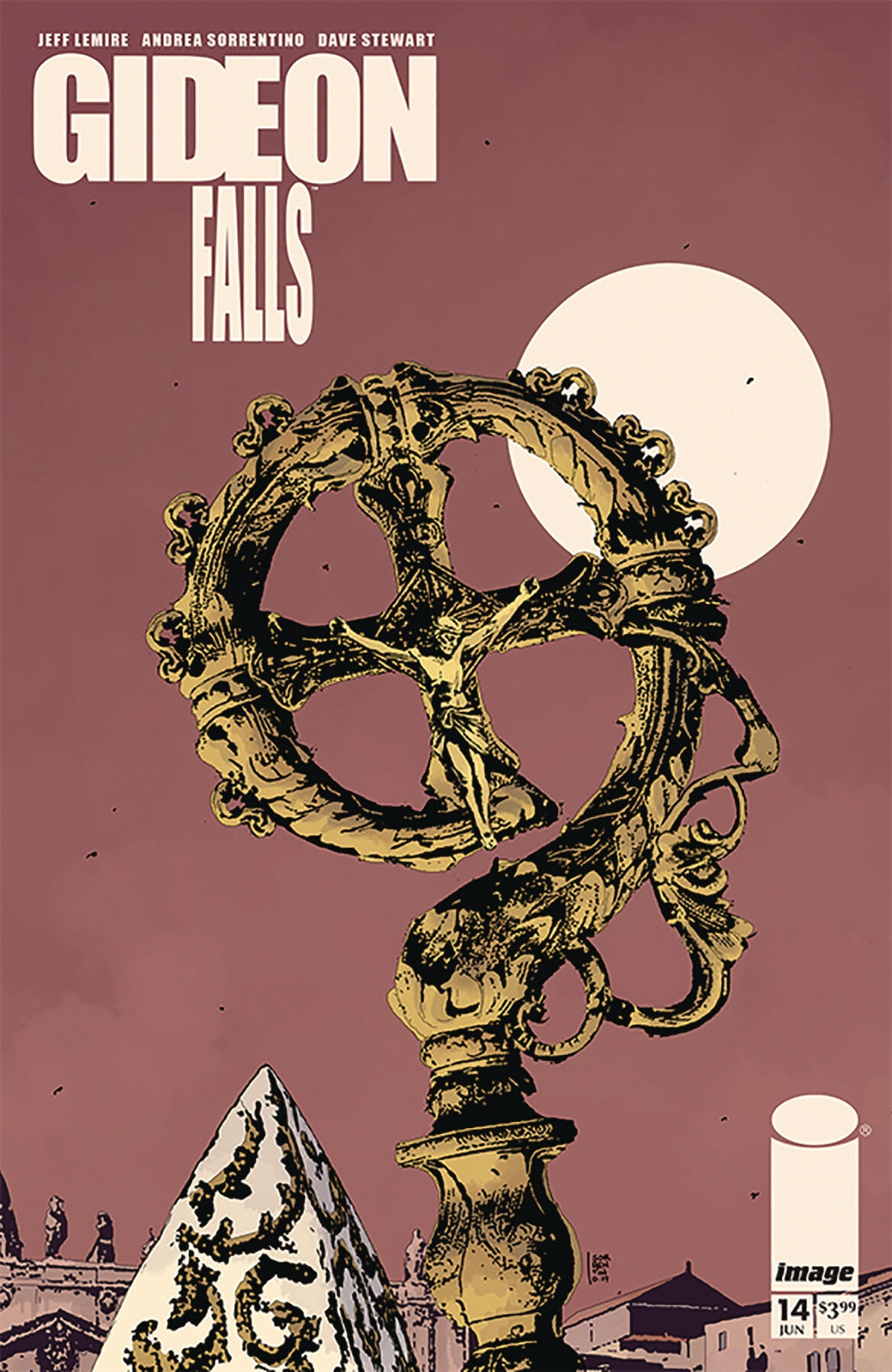Gideon Falls #1
Gideon Falls #1, which launches the new series by Jeff Lemire and Andrea Sorrentino (the team behind beloved runs of Green Arrow and Old Man Logan), weaves together two diverse narratives to create a haunting tale of modern horror. In one, Norton Sinclair, an outpatient from a mental health facility, searches through the trash in gloves and a paper sanitary mask looking for otherwise mundane objects he feels drawn to, collecting and cataloguing them in order to uncover a mystery only he sees. In the other, Father Fred, a priest with a mysterious past on the path to redemption, is assigned to take over the church in Gideon Falls, a small, quiet town that is anything but idyllic. Brought together in the final pages of the premiere issue, these two tales begin with a general sense of unease that increases until the full-fledged terror of the gripping cliffhanger.
This first issue is less about plot and more about flavor, giving readers the perfect first bite of this compelling metaphysical mystery. Much of the details are kept loose; there is no real indicator of where these two interlocking narratives take place, except the name of the small town Father Fred is sent to, or even when these two narratives take place. They may not even take place in the same time period. There is no way to know. The only link, while mesmerizing, is hardly an indicator of much of anything, except the possibility that Norton really is piecing together something and not just indulging his paranoid delusions, though the very nature of the story calls into question if that conclusion is one that can be trusted at all.
The work is, in many ways, a massive departure for artist Andrea Sorrentino, with none of his frenetic layouts, no inset panels, none of the stylistic touches that have previously defined his work, but that is an excellent choice, as that kind of busyness would distract from the tales so far. Without any real inkling of where the story will go, it’s hard to predict whether that style will be employed later, but the restraint here is wonderful. Further, there are elements to the art that greatly contribute to the surreal nature of Norton’s life, particularly the panels showing Norton’s living space, which not only looks like it’s through a fisheye lens, but also removes any weight or volume from the furniture in his room, as if they were just drawn on the walls.
Multi-Eisner Award winning Colorist Dave Stewart, who Lemire has worked with on Black Hammer at Dark Horse, has been brought in to color Sorrentino’s inked art for the first time, and the pairing is breathtaking. Stewart uses a muted palette for most of the issue, punctuating it with vibrant reds that bleed from Norton’s story into Father Fred’s and really help drive home the connection between the two.
Writer Jeff Lemire, after the issue, reveals the film school origins of the series, from student film to abandoned graphic novel to indie comic to this full blown Image series with Lemire’s most well known collaborator. It seems, much like Norton himself, Lemire has seen the secret potential in this character and his story for longer than anything else, and his handling of the character is sublime. Norton is led by visions and hunches, leaving readers to decide for themselves whether he is trustworthy or not, though the series seems primed to be able to constantly undermine that choice either way, as Norton’s entire reality is distorted, his world warped and barely real. Contrasted against that is both the concrete story of Father Fred and that character’s increasing discomfort with the events of his first day in Gideon Falls, which, together, makes a fully rounded story with unlimited scope that is still grounded in the characters.
It’s hard to know now if this will be another classic for Image, but the first issue certainly keeps that door open, with a bold and experimental narrative that, while mostly in the horror genre, also feels neo-noir-ish and surreal. This blending is complementary, and carves a unique place for this book in Image’s line-up.









